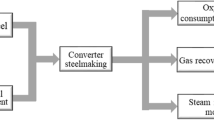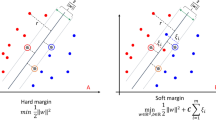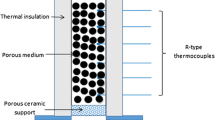Abstract
Ship black carbon emissions have caused great harm to ecological environment. In order to estimate the black carbon emissions, thereby reducing the cost of black carbon experiments, here, we introduced four machine learning algorithms which are lasso regression, support vector machine, extreme gradient boosting, and artificial neural network to predict ship black carbon emissions. The prediction models were established with using the datasets acquired from similar marine engines under various steady-state conditions. The results show that SVM, XGB, and ANN have higher prediction accuracy than lasso regression, and the adjusted R2 of each model is 0.9810, 0.9850, 0.9885, and 0.6088. Although ANN shows the best prediction performance, it is inferior to SVM and XGB in terms of model stability and training cost. Then, in order to simplify the optimization process of hyperparameters and improve the prediction accuracy of the model at the same time, we use three different swarm intelligence algorithms to automatically optimize the hyperparameters of SVM and XGB. In addition, we applied mutual information to measure the correlation between the characteristics of the prediction models and black carbon concentration and found that the characteristics which related to in-cylinder combustion have a strong correlation with the black carbon concentration. The findings in this paper prove the feasibility of machine learning in ship black carbon emission prediction and could provide references for reducing ship black carbon emissions and the formulation of emission regulations.





















Similar content being viewed by others
Ethics approval and consent to participate.
Not applicable.
Data Availability
The datasets generated and analyzed during the current study are not publicly available due to the datasets are used for engine R&D and belong to the technical secret of the enterprise but are available from the corresponding author on reasonable request. The datasets used during the current study are available from the corresponding author on reasonable request.
Abbreviations
- IMO:
-
International Maritime Organization
- FSN:
-
Filter smoke number
- PAS:
-
Photo-acoustic spectroscopy
- LII:
-
Laser-induced incandescence
- MAAP:
-
Multi-angle absorption photometer
- OC:
-
Organic carbon
- BC:
-
Black carbon
- eBC:
-
Concentration of black carbon
- rpm:
-
Engine speed (r·min−1)
- ML:
-
Machine learning
- BTDC:
-
Before top dead center
- CA:
-
Crack angle
- FC:
-
Fuel consumption
- BSFC:
-
Brake-specific fuel consumption
- MEP:
-
Mean effective pressure
- AI:
-
Air intake
- AMI:
-
Adjusted mutual information
- RP:
-
Rail pressure
- IT:
-
Injection timing
- LR:
-
Load rate
- φ:
-
Excess air coefficient
- ANN:
-
Artificial neural network
- XGB:
-
Extreme gradient boosting
- GBDT:
-
Gradient boosting decision tree
- SVM:
-
Support vector machine
- R2 :
-
Coefficient of determination
- MSE:
-
Mean square error
- MAE:
-
Mean absolute error
- GWO:
-
Gray wolf optimization
- HHO:
-
Harris hawk optimization
- SSA:
-
Sparrow search algorithm
- MI:
-
Mutual information
- NMI:
-
Normalized mutual information
References
Ağbulut Ü, Gürel AE, Sarıdemir S (2021) Experimental investigation and prediction of performance and emission responses of a CI engine fuelled with different metal-oxide based nanoparticles–diesel blends using different machine learning algorithms[J]. Energy 215:119076
Anenberg SC, Schwartz J, Shindell D et al (2012) Global air quality and health co-benefits of mitigating near-term climate change through methane and black carbon emission controls[J]. Environ Health Perspect 120(6):831–839
Anenberg SC, Miller J, Henze DK et al (2019) The global burden of transportation tailpipe emissions on air pollution-related mortality in 2010 and 2015[J]. Environ Res Lett 14(9):094012
Anenberg S, Miller J, Henze D et al (2020) A global snapshot of the air pollution-related health impacts of transportation sector emissions in 2010 and 2015 (2019) [J]
Azzara A, Minjares R, Rutherford D (2015) Needs and opportunities to reduce black carbon emissions from maritime shipping[J]. Assessment 118(11):5380–5552
Badra J, Sim J, Pei Y et al (2020) Combustion system optimization of a light-duty GCI engine using CFD and machine learning[R]. SAE Technical Paper
Bansal, Jagdish Chand, Pramod Kumar Singh, Nikhil R Pal et al (2019) Evolutionary and swarm intelligence algorithms. Vol. 779. Cham: Springer
Belghazi M I, Baratin A, Rajeshwar S et al (2018) Mutual information neural estimation[C]//International Conference on Machine Learning. PMLR: 531–540.
Bellone M, Faghani E, Karayiannidis Y (2020) Comparison of CNN and LSTM for modeling virtual sensors in an engine[J]. SAE International Journal of Advances and Current Practices in Mobility 2(2020–01–0735): 2632–2639
Bond TC, Doherty SJ, Fahey DW et al (2013) Bounding the role of black carbon in the climate system: a scientific assessment[J]. J Geophys Res: Atmos 118(11):5380–5552
Bové H, Bongaerts E, Slenders E et al (2019) Ambient black carbon particles reach the fetal side of human placenta[J]. Nat Commun 10(1):1–7
Chen T, Guestrin C (2016) Xgboost: A scalable tree boosting system[C]//Proceedings of the 22nd acm sigkdd international conference on knowledge discovery and data mining: 785–794
Comer B (2021) Maritime Shipping: black carbon issues at the International Maritime Organization[M]//Transportation Air Pollutants. Springer, Cham, pp 13–25
Corbett JJ, Lack DA, Winebrake JJ et al (2010) Arctic shipping emissions inventories and future scenarios[J]. Atmos Chem Phys 10(19):9689–9704
Fang XH, Papaioannou N, Leach F et al (2021) On the application of artificial neural networks for the prediction of NO x emissions from a high-speed direct injection diesel engine[J]. Int J Engine Res 22(6):1808–1824
Heidari AA, Mirjalili S, Faris H et al (2019) Harris hawks optimization: algorithm and applications[J]. Futur Gener Comput Syst 97:849–872
Herceg S, Andrijić ŽU, Bolf N (2019) Development of soft sensors for isomerization process based on support vector machine regression and dynamic polynomial models[J]. Chem Eng Res Des 149:95–103
IMO Secretariat, Report to the Marine Environment Protection Committee (No. PPR 5/24). International Maritime Organization (2018)
ISO 8178–3:2019. Reciprocating internal combustion engines — exhaust emission measurement — part 3: test procedures for measurement of exhaust gas smoke emissions from compression ignition engines using a filter type smoke meter.
Jaliliantabar F, Ghobadian B, Najafi G et al (2018) Artificial neural network modeling and sensitivity analysis of performance and emissions in a compression ignition engine using biodiesel fuel[J]. Energies 11(9):2410
Ko E, Park J (2019) Diesel mean value engine modeling based on thermodynamic cycle simulation using artificial neural network[J]. Energies 12(14):2823
Koschwitz D, Frisch J, Van Treeck C (2018) Data-driven heating and cooling load predictions for non-residential buildings based on support vector machine regression and NARX Recurrent Neural Network: A comparative study on district scale[J]. Energy 165:134–142
Kowalski J, Krawczyk B, Woźniak M (2017) Fault diagnosis of marine 4-stroke diesel engines using a one-vs-one extreme learning ensemble[J]. Eng Appl Artif Intell 57:134–141
Lee J, Kwon S, Kim HJ et al (2021) Machine learning applied to the NOx prediction of diesel vehicle under real driving cycle[J]. Appl Sci 11(9):3758
Li Y, Henze DK, Jack D et al (2016) Assessing public health burden associated with exposure to ambient black carbon in the United States[J]. Sci Total Environ 539:515–525
Li H, Butts K, Zaseck K et al (2017) Emissions modeling of a light-duty diesel engine for model-based control design using multi-layer perceptron neural networks[R]. SAE Technical Paper
Liang W, Luo S, Zhao G et al (2020) Predicting hard rock pillar stability using GBDT, XGBoost, and LightGBM algorithms[J]. Mathematics 8(5):765
Meilă M (2007) Comparing clusterings—an information-based distance[J]. J Multivar Anal 98(5):873–895
Mirjalili S, Mirjalili SM, Lewis A (2014) Grey wolf optimizer[J]. Adv Eng Softw 69:46–61
Momenimovahed A, Gagné S, Martens P et al (2021) Comparison of black carbon measurement techniques for marine engine emissions using three marine fuel types[J]. Aerosol Science and Technology (just-accepted): 1–19
Newman MEJ, Cantwell GT, Young JG (2020) Improved mutual information measure for clustering, classification, and community detection[J]. Phys Rev E 101(4):042304
Niu X, Yang C, Wang H et al (2017) Investigation of ANN and SVM based on limited samples for performance and emissions prediction of a CRDI-assisted marine diesel engine[J]. Appl Therm Eng 111:1353–1364
Özener O, Yüksek L, Özkan M (2013) Artificial neural network approach to predicting engine-out emissions and performance parameters of a turbo charged diesel engine[J]. Therm Sci 17(1):153–166
Ramanathan V, Carmichael G (2008) Global and regional climate changes due to black carbon[J]. Nat Geosci 1(4):221–227
Ranstam J, Cook JA (2018) LASSO regression[J]. J Br Surg 105(10):1348–1348
Rasmussen MA, Bro R (2012) A tutorial on the Lasso approach to sparse modeling[J]. Chemom Intell Lab Syst 119:21–31
Renault T (2020) Sentiment analysis and machine learning in finance: a comparison of methods and models on one million messages[J]. Digital Finance 2(1):1–13
Taghavifar H, Taghavifar H, Mardani A et al (2014) Exhaust emissions prognostication for DI diesel group-hole injectors using a supervised artificial neural network approach[J]. Fuel 125:81–89
Tahsien SM, Karimipour H, Spachos P (2020) Machine learning based solutions for security of Internet of Things (IoT): A survey[J]. J Netw Comput Appl 161:102630
Tibshirani R (1996) Regression shrinkage and selection via the lasso[J]. J Roy Stat Soc: Ser B (methodol) 58(1):267–288
Timonen H, Aakko-Saksa P, Kuittinen N et al (2017) Black carbon measurement validation onboard (SEA-EFFECTS BC WP2) [J]. SEA EFFECTS BC WP2, SEA-EFFECTS PROJECT
Viana M, Hammingh P, Colette A et al (2014) Impact of maritime transport emissions on coastal air quality in Europe[J]. Atmos Environ 90:96–105
Vinh NX, Epps J, Bailey J (2010) Information theoretic measures for clusterings comparison: variants, properties, normalization and correction for chance[J]. The Journal of Machine Learning Research 11:2837–2854
Werbos P (1974) Beyond regression: new tools for prediction and analysis in the behavior science[J]. Unpublished Doctoral Dissertation, Harvard University
Wilkinson J, Arnold K F, Murray EJ et al (2020) Time to reality check the promises of machine learning-powered precision medicine[J]. The Lancet Digital Health
Xu X, Zhao Z, Xu X et al (2020) Machine learning-based wear fault diagnosis for marine diesel engine by fusing multiple data-driven models[J]. Knowl-Based Syst 190:105324
Xue J, Shen B (2020) A novel swarm intelligence optimization approach: sparrow search algorithm[J]. Systems Science & Control Engineering 8(1):22–34
Yu C, Seslija M, Brownbridge G et al (2020) Deep kernel learning approach to engine emissions modeling[J]. Data-Centric Engineering 1
Acknowledgements
The authors are thankful to all the personnel who either provided technical support or helped with data collection. We also acknowledge all the reviewers for their useful comments and suggestions.
Author information
Authors and Affiliations
Contributions
Ying Sun, conceptualization, data curation, formal analysis, investigation, methodology, software, writing — original draft, and visualization.
Lin Lü, conceptualization, methodology, investigation, resources, writing — review and editing, supervision, and project administration.
Yun-kai Cai, writing — review and editing.
Peng Lee, conceptualization, methodology, validation, and writing — review and editing.
Corresponding author
Ethics declarations
Ethics approval and consent to participate.
Not applicable.
Consent for publication
Not applicable.
Competing interests
The authors declare no competing interests.
Additional information
Responsible Editor: Philippe Garrigues
Publisher's Note
Springer Nature remains neutral with regard to jurisdictional claims in published maps and institutional affiliations.
Rights and permissions
About this article
Cite this article
Sun, Y., Lü, L., Cai, Yk. et al. Prediction of black carbon in marine engines and correlation analysis of model characteristics based on multiple machine learning algorithms. Environ Sci Pollut Res 29, 78509–78525 (2022). https://doi.org/10.1007/s11356-022-20496-4
Received:
Accepted:
Published:
Issue Date:
DOI: https://doi.org/10.1007/s11356-022-20496-4




